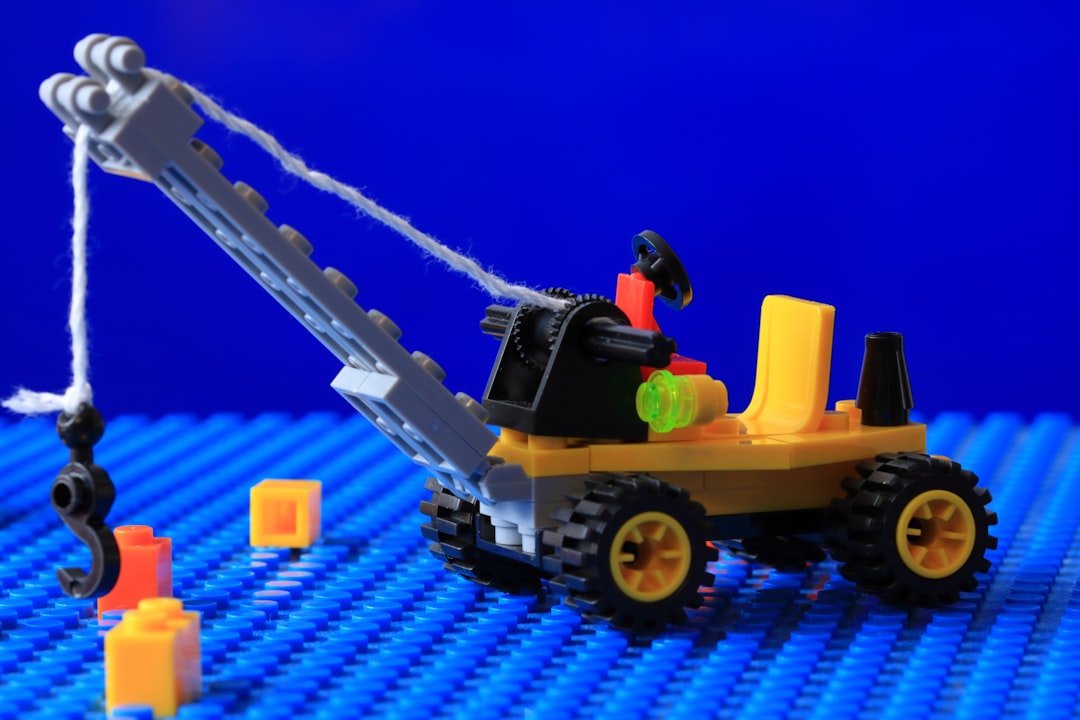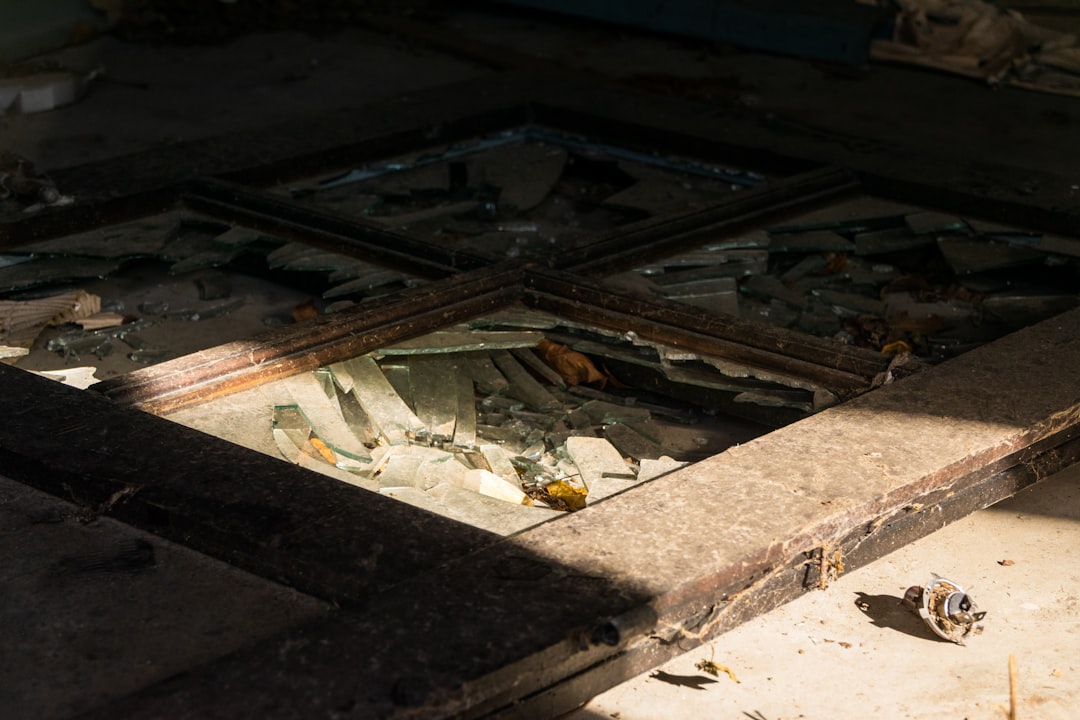

Engage prospects with a scan and streamline customer engagement with FREE QR code marketing tools by Sona – no strings attached!
Create a Free QR CodeFree consultation

No commitment

Engage prospects with a scan and streamline customer engagement with FREE QR code marketing tools by Sona – no strings attached!
Create a Free QR CodeFree consultation

No commitment
Crawl space repair contractors consistently face challenges at the intersection of high-stakes on-site work and the growing digital demands of today's informed homeowner. Manual, offline processes like relying on event sign-up sheets, passing out printed flyers, or gathering names on work slips often mean high-value prospects go untracked, leaving key opportunities lost to competitors who respond faster. Lacking a reliable way to capture and identify every interested party, contractors may never know which decision-makers reviewed a quote, browsed their gallery, or checked certifications, an all-too-common source of missed leads and frustrated sales teams.
QR codes have emerged as a modern solution, allowing crawl space repair professionals to close these visibility gaps by turning every physical touchpoint such as truck doors, inspection forms, and compliance papers into real-time digital entry points. Instead of paper-based hand-offs or static mailers that might never be read, a quick scan connects customers to contractor services, warranty activation, regulatory documentation, or quote request workflows with no app or special access required. This accessibility transforms each engagement into a trackable moment, bridging field operations with customer expectations for immediacy and transparency.
When crawl space repair providers embed QR strategies across their materials, they are not just making it easier to request quotes or reviews, they are also eliminating manual data entry, surfacing important engagement signals for timely follow-up, and gaining insight into which marketing efforts actually drive results. QR-enabled workflows reduce time lost to delays, ensure prospects are not missed, and create a framework where every scan contributes to better targeting, satisfied customers, and continued growth. Solutions like Sona QR make it easy to deploy, track, and optimize these campaigns at scale so that contractors can focus on delivering excellent work while keeping the pipeline full and measurable.

Field-based customer engagement for crawl space repair contractors is frequently hindered by the disconnect between on-site work and centralized digital systems. Paper handouts and manual forms often result in lost contact details, slow intake, and missed follow-up, especially when high-intent prospects inquire without formally completing paperwork. QR codes close this gap by connecting what happens in the crawl space to the systems that drive scheduling, quoting, and service delivery.
With clear placement and purpose, QR codes now offer contractors a way to build fast, intuitive experiences that move customers forward. Scans can lead to estimates, maintenance plans, or compliance documents without waiting for a callback. Tools like Sona QR enhance this impact by making every scan trackable, editable, and measurable, which means contractors can update offers without reprinting materials and respond to leads based on real behavior.
Outdated brochures often go ignored, while manual data entry introduces error and delay. Advanced solutions like Sona QR let contractors automatically enrich contacts, sync scan data to CRMs for fast outreach, and keep marketing assets updated without constant reprinting. For example, a QR code on a crawl space inspection form can dynamically display seasonal offers or adjust for regulatory changes, ensuring every scan triggers targeted engagement and no lead gets left behind.

For many crawl space repair businesses, leads slip through the cracks because offline customer interactions are not linked to digital follow-ups. A property owner may review a handout and forget to call back, or a facilities manager might read compliance documents without filling out a service request. QR codes convert moments of interest into action by making the next step clear and effortless.
They also introduce much-needed agility. After a storm, contractors can push updated emergency mitigation advice with a single content change behind a dynamic QR code. When regulations change, inspection forms and compliance instructions can be updated without reprinting. The result is faster service, fewer errors, and a better customer experience that stands out locally.
For example, adding QR codes to inspection summaries means property owners do not need to remember a website, which reduces no-show rates and reveals which properties need urgent follow-up. This shift from reactive to proactive engagement is what sets high-performing, data-driven contractors apart in an increasingly competitive market.

Crawl space repair specialists juggle compliance, safety, and lead generation in dynamic environments where capturing each potential client or upsell is critical. Choosing the right QR format ensures the scan triggers the right action and the experience is smooth on mobile devices.
Dynamic QR codes are recommended for most contractor use cases because they enable updates without reprinting, support tracking, and integrate with CRMs. Static QR codes have value for simple, permanent destinations, but they limit agility and measurement. Sona QR supports both with centralized management and analytics.
By utilizing dynamic QR codes, content can be updated as new services roll out or compliance rules shift. This ensures lead capture forms and customer resources never go out of date and eliminates confusion that can lead to disengagement or compliance risk.
Crawl space repair contractors often wonder which touchpoints matter most for new business, yet many fail to measure local demand because there is no easy way for passersby or recipients to engage. QR codes turn passive awareness into active interest by inviting a scan and surfacing a simple next action.
Focus on the physical moments where curiosity is highest or where follow-up tends to get lost. Think about job sites, inspection handoffs, payment milestones, and neighbor visibility. When each of these becomes scannable, you uncover intent that was previously invisible and you can respond sooner.
Each deployment allows contractors to minimize wasted spend, attribute offline engagement to new business, and ensure all interested prospects are surfaced for timely follow-up, even if they never submit a traditional form.

Contractors often lose out on follow-up opportunities because vital signals like review site visits or minor maintenance inquiries are not tracked back to the customer record. QR codes can centralize and accelerate these workflows with clear destinations and automated handoffs.
Focus on use cases that connect high-intent moments to measurable outcomes. Start with a few foundational scenarios, validate performance, then expand across more touchpoints and territories. Sona QR makes it easy to manage these variations and measure their impact.
These scenarios not only accelerate conversion, they reveal valuable signals such as which content a customer interacts with most and when they are ready to buy, which supports smarter targeting and improved retention.
A common frustration for crawl space repair companies is the lack of visibility into which prospects are genuinely interested but have not filled out a contact form. Every QR scan, however, unlocks a data point about customer intent signals. With the right setup, you can segment audiences based on where and why they scanned, then follow up with messages tailored to their needs.
Segmentation improves timing, relevance, and conversion. It helps identify property managers who control multiple sites, homeowners responding to weather events, and neighbors who saw your crew at work. Sona QR’s tagging and integrations make these segments seamless to create and activate in your CRM and ad platforms.
This approach enables data-driven follow-up and maximizes the value of every opportunity, even from prospects who remain otherwise anonymous at first scan.
Disconnected campaigns often result in fragmented messages and missed handoffs. When physical materials and digital outreach are unified with QR codes, you gain real-time engagement and accurate attribution across channels. The same code can power immediate action for customers and reliable data for your team.
Begin by mapping your typical customer journey. Identify offline materials that carry the narrative from discovery to decision, then give each step a scannable link that moves the buyer forward. With Sona QR, every scan is captured, attributed, and synced to your CRM for coordinated follow-up.
QR codes serve as the offline onramp to your digital marketing engine. They also unlock a new layer of data collection across channels that were once difficult to measure. With a centralized platform like Sona QR, you can manage all your codes, monitor performance, and sync scan data with your CRM and ad platforms.
Successful QR campaigns combine clear goals, thoughtful design, strategic placement, and rigorous measurement. Before you print anything, align the code’s purpose with a specific business outcome and define the follow-up path after a scan. This reduces confusion in the field and accelerates time to value.
Start small, validate, then scale. Pilot one or two high-impact placements such as job site signage and inspection reports. Learn which messages get scanned, which forms convert best, and how crews explain the value to customers. Use those insights to expand with confidence and consistency. Start creating QR codes for free.
Clarify the primary outcome. For crawl space repair, strong candidates include booking estimates, registering warranties, collecting reviews, or submitting compliance documents. Prioritize the use case that will remove the most friction in your current customer journey.
Choose static for permanent, non-tracked destinations like a PDF brochure. Choose dynamic for campaigns that require tracking, editing, A/B testing, or retargeting. Most marketing and operations workflows benefit from dynamic codes.
Make your code recognizable and inviting. Add a clear call to action and a short benefit statement so people know what they get by scanning. Use brand colors and adequate contrast so the code stands out without sacrificing scannability.
Prioritize placements with frequent exposure and high intent. Start with inspection reports, job site signage, and direct mail to nearby homeowners. Expand to vehicles, invoices, and event booths as the system proves effective.
Measurement turns QR from a convenience into a growth engine. Monitor scan volume, completion rates, and time from scan to follow-up. Compare placements, messages, and offers to focus resources where they work best.
Accurate measurement is critical for crawl space repair businesses seeking to prove marketing ROI and course-correct campaigns. Too often, leads become unattributable if a prospect comes through a generic phone number or untracked mailer. QR analytics connect offline actions to online conversions and revenue so investment decisions are data-driven.
Start by treating each QR as its own micro-campaign. Name codes clearly by placement and region, add UTM parameters, and map scan events to CRM workflows. Over time, you will see which neighborhoods respond to what message, which crew vehicles generate demand, and which inspection documents drive the most follow-up.
This approach transforms what was once a fragmented, hard-to-measure process into a transparent, data-driven growth engine. Sona QR captures real-world engagement, and Sona.com connects scans to pipeline and closed revenue through multi-touch attribution and identity resolution.
Maximizing the return on QR deployments means tackling challenges like inconsistent messaging, untracked engagement, and low scan rates. The right operational habits ensure that data captured from every scan is actually put to work and that customers understand the value of scanning.
Equip crews with simple scripts that describe what the QR does and why it helps. For example, say Scan this to register your warranty in under 30 seconds or Scan to see your estimate and schedule your preferred time. Clear benefits increase scans and reduce friction for both teams and clients.
By building transparency and field-level accountability into your QR program, you turn everyday materials into measurable growth assets that continually improve with data.

Contractors across regions have documented measurable impact from thoughtful QR code adoption. The common thread is clarity of purpose, smart placement, and consistent follow-up with CRM integration.
Use these examples to spark ideas, then localize the details for your service areas, partners, and marketing calendar. As you test, let results guide which to scale and which to refine.
These examples highlight how uncovering previously anonymous engagement signals can transform the sales pipeline and strengthen long-term customer relationships. QR codes help contractors meet customers where they are and turn every physical surface into a digital gateway.
Even well-designed campaigns can stall if basics are overlooked. The most common issues include vague CTAs, poor placement, untested destinations, and privacy concerns. A small amount of planning and field testing prevents most problems and keeps your operation focused on revenue outcomes.
Set expectations clearly and deliver what you promise. If the QR says Activate free compliance reminder, make sure the destination does exactly that in as few steps as possible. Reliability builds trust, repeat business, and positive reviews.
Following this guidance reduces campaign friction, minimizes frustration for both customers and field teams, and ensures every digital touchpoint is purposeful and dependable.
Innovative uses of QR codes now allow crawl space repair contractors to address long-standing gaps such as anonymous site visitors or delayed compliance registrations by turning every interaction into a measurable, actionable opportunity. With dynamic, data-enriched QR strategies, contractors align swift field service with digital expectations, make timely outreach the default rather than the exception, and create a foundation for scalable, insight-driven growth. Each touchpoint, when connected and tracked, enables a new level of customer satisfaction and operational efficiency, helping even the most hands-on teams thrive within an evolving marketplace.
By fully integrating QR codes into every stage of the crawl space repair journey, contractors reinvent how they capture, engage, and convert demand. Each scan delivers traceable insights, whether it is a storm-driven emergency call, a compliance checklist submission, or a post-job referral, ensuring that no valuable opportunity slips by unknown and unmeasured. With Sona QR and Sona.com, you have the tools to generate your first codes, measure performance by channel and neighborhood, sync engagement into your CRM, and revenue attribution across buying stages. Start with one or two high-intent use cases, validate the lift, and expand. The physical to digital bridge is no longer a nice-to-have in this industry, it is the new baseline for winning more work with less waste.
QR codes have revolutionized the crawl space repair contractor industry by transforming how access information and service details are shared and tracked. By integrating QR codes, contractors can streamline customer acquisition, enhance client communication, and enable seamless access management, all while capturing valuable data on each interaction. Imagine being able to instantly provide technicians with up-to-date crawl space schematics or maintenance histories through a simple scan—reducing delays and improving service quality.
With Sona QR, you can create dynamic, trackable QR codes tailored specifically for crawl space repair needs. Update access instructions or service notes in real-time without reprinting, monitor scan activity to optimize operations, and link every interaction directly to business outcomes. No more guesswork—just efficient, measurable engagement that elevates your service delivery.
Start for free with Sona QR today and turn every scan into a smoother repair process, happier customers, and increased revenue.
The article does not specify signs that indicate the need for crawl space repair.
The article does not provide information on the cost of crawl space repair.
The article suggests that using QR codes on materials such as inspection reports, job site signage, and direct mail can help contractors connect with customers and provide easier access to quotes and services, but it does not provide direct advice on finding a reputable contractor.
While the article focuses on QR code marketing for contractors, it implies that proper crawl space repair and maintenance improve safety, warranty compliance, and customer satisfaction through better service delivery and communication.
The article does not detail common crawl space repair issues or their specific solutions.
QR codes connect physical touchpoints to digital workflows, enabling instant quote requests, warranty activations, compliance form submissions, and real-time feedback, which reduces manual data entry and missed leads.
Dynamic QR codes are recommended because they allow updates without reprinting, support tracking, and integrate with CRMs, while static QR codes are suitable for simple, permanent destinations.
Effective placements include inspection reports, job site signage, direct mail, company vehicles, event booths, invoices, and equipment tags to capture leads and improve follow-up.
By using platforms like Sona QR, contractors can track scan volume, location, device, and time, attribute outcomes to revenue actions, integrate data with CRMs, and optimize campaigns based on analytics.
Best practices include choosing clear use cases, designing codes with call-to-action and branding, testing across devices, placing codes strategically, using unique codes per asset, adding UTM parameters, educating crews and customers, and continuously tracking and optimizing.
Use Sona QR's trackable codes to improve customer acquisition and engagement today.
Create Your FREE Trackable QR Code in SecondsJoin results-focused teams combining Sona Platform automation with advanced Google Ads strategies to scale lead generation

Connect your existing CRM

Free Account Enrichment

No setup fees
No commitment required

Free consultation

Get a custom Google Ads roadmap for your business






Launch campaigns that generate qualified leads in 30 days or less.
